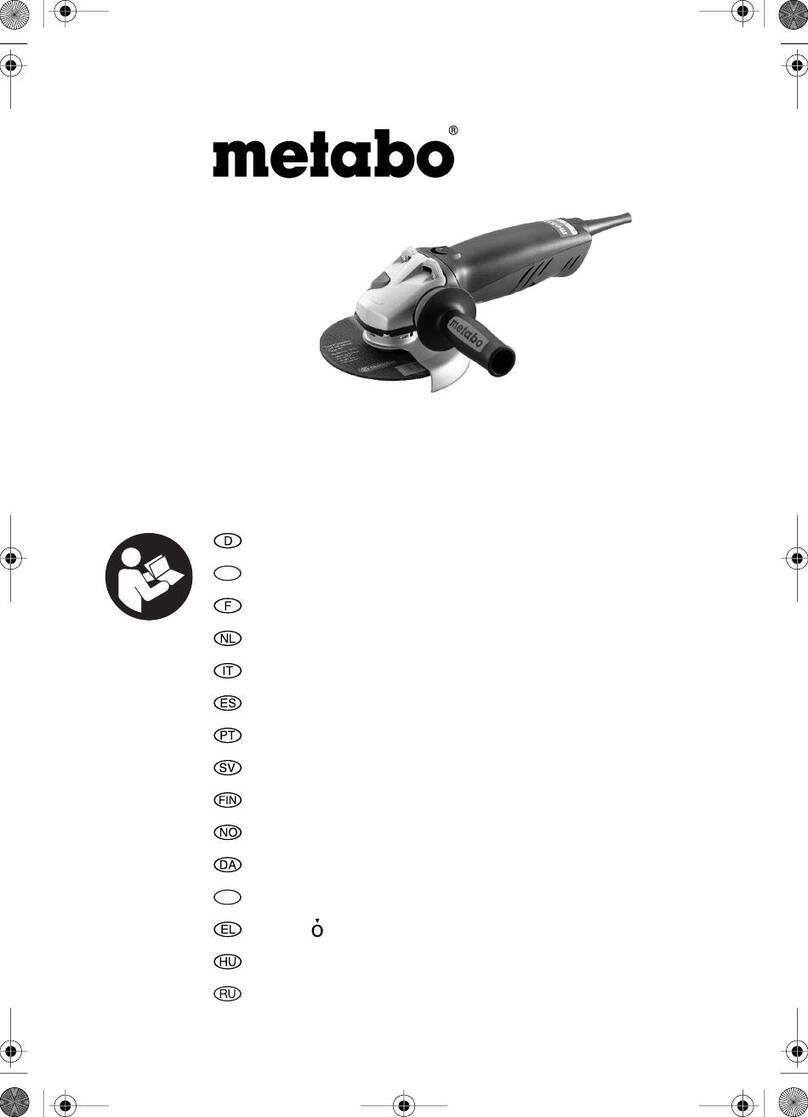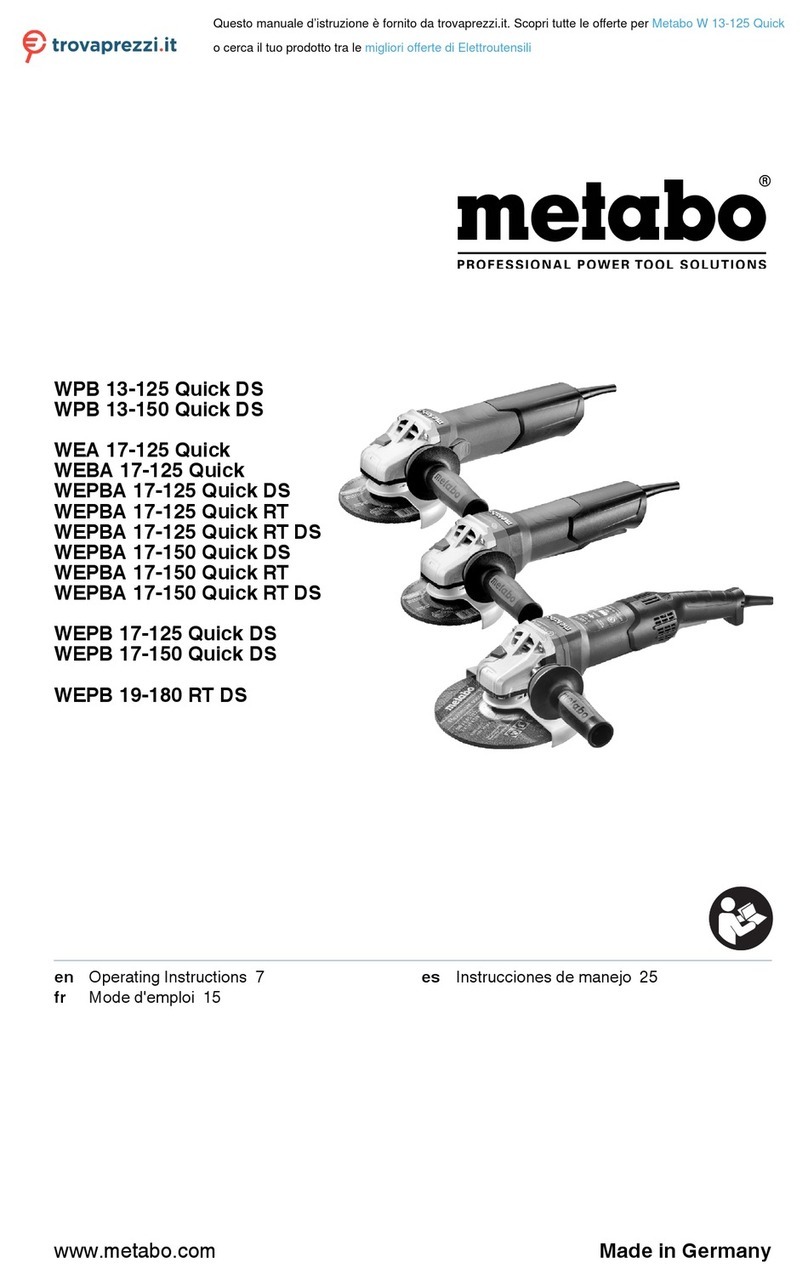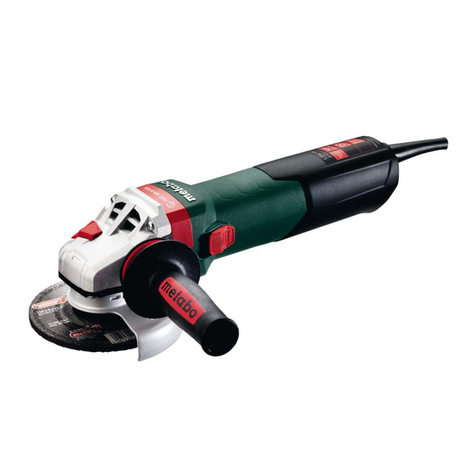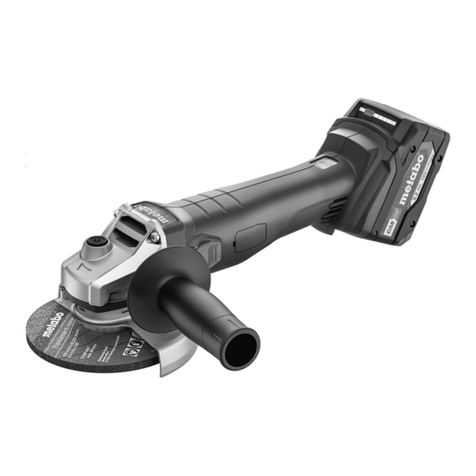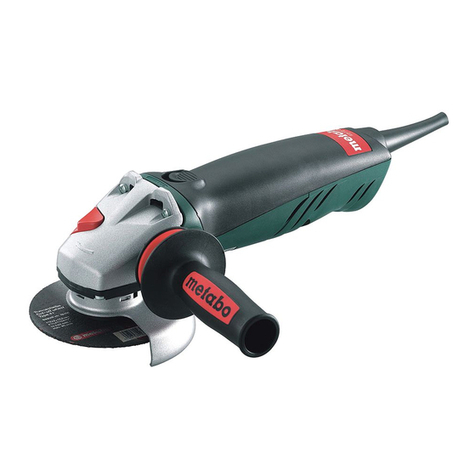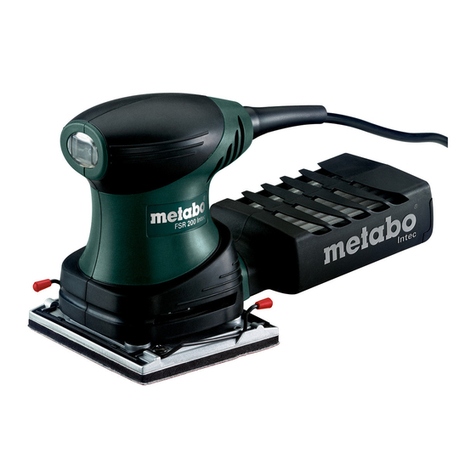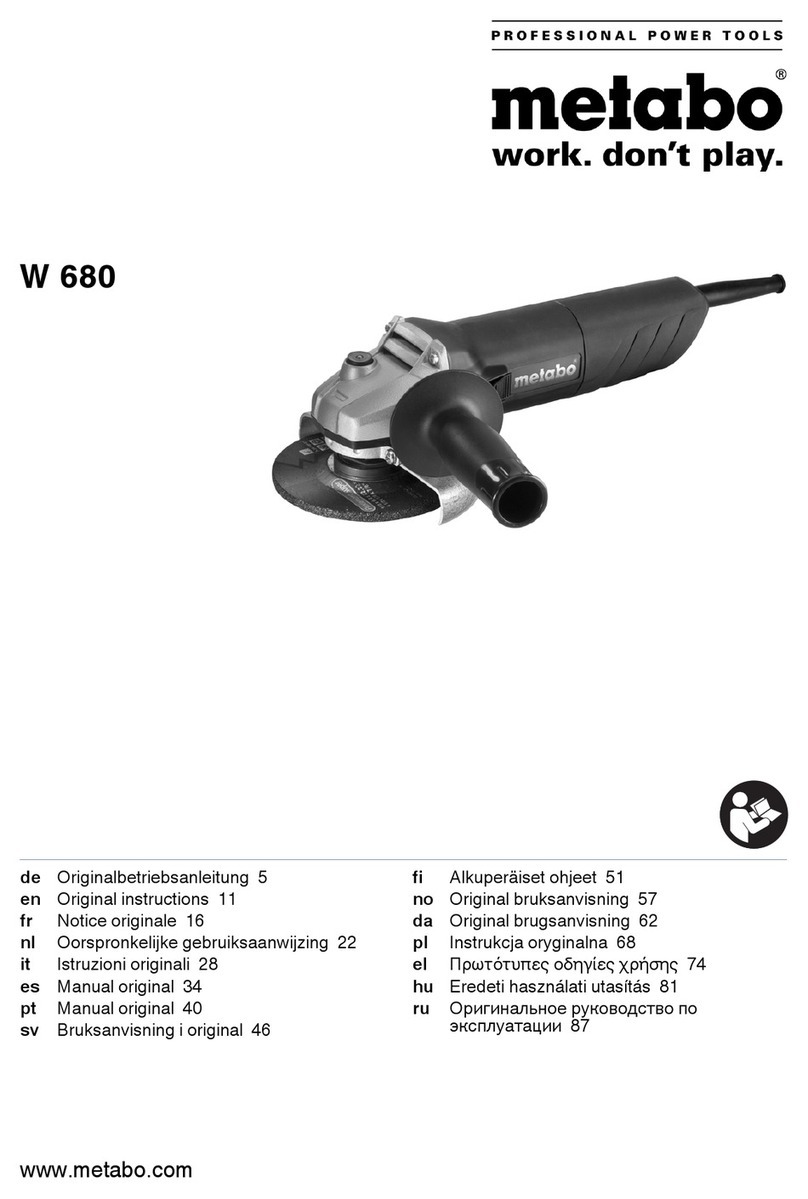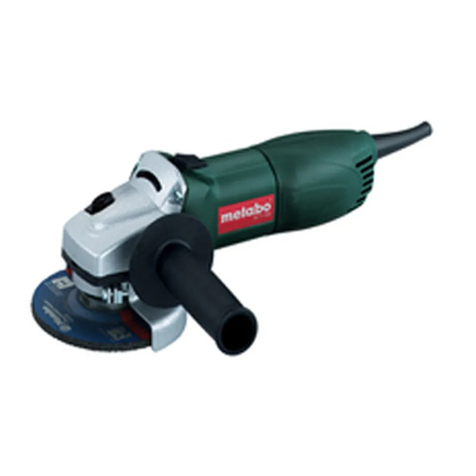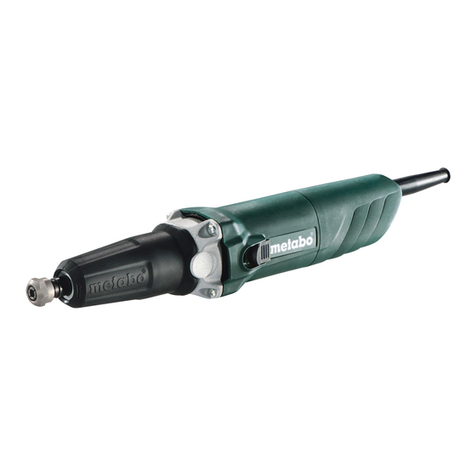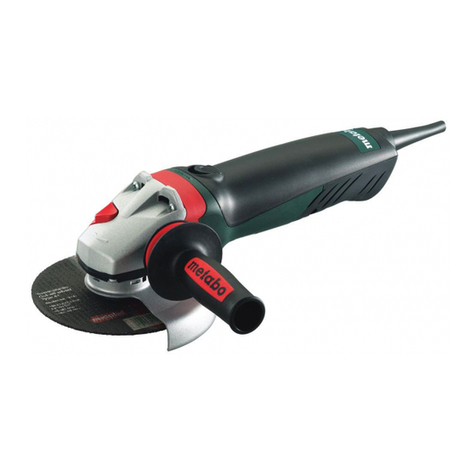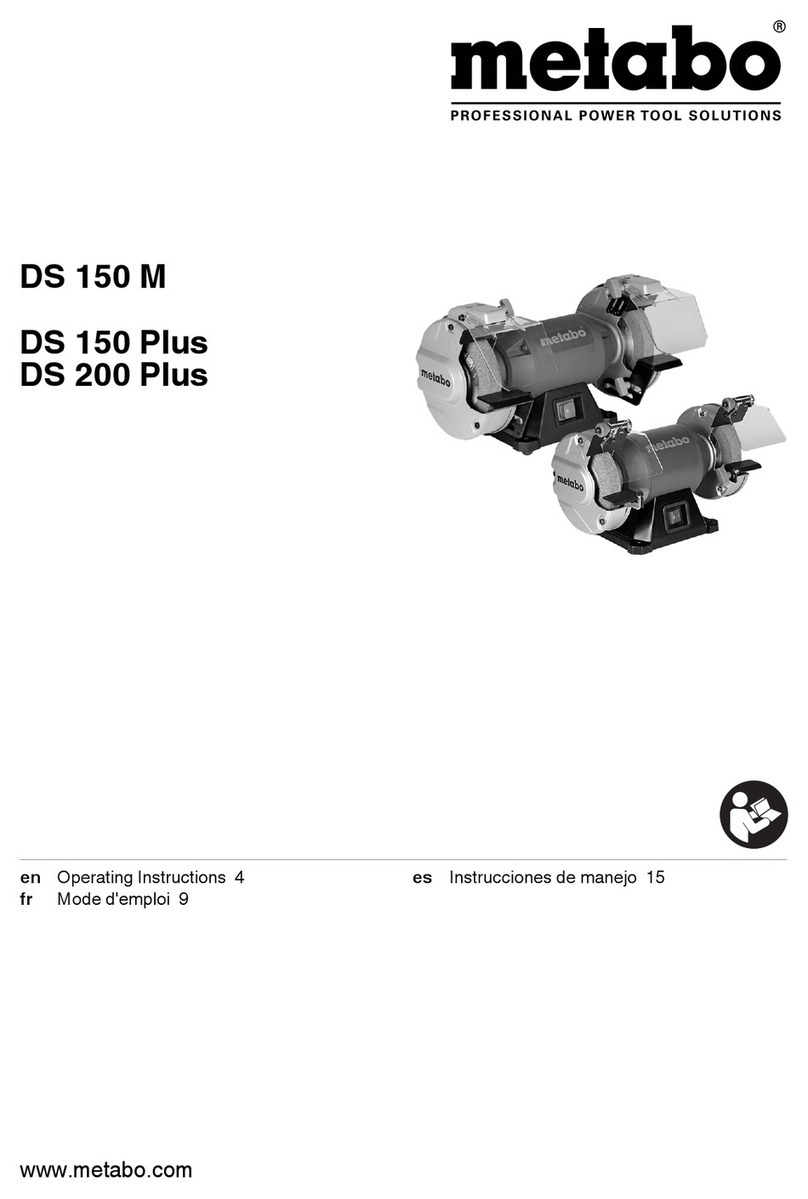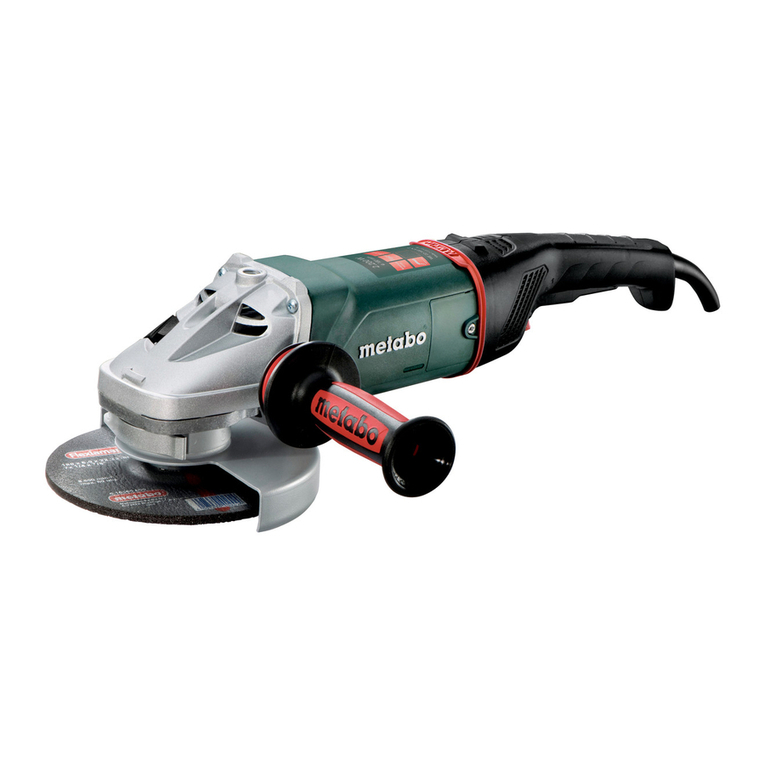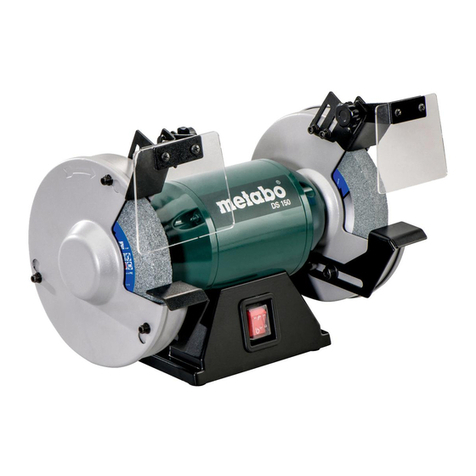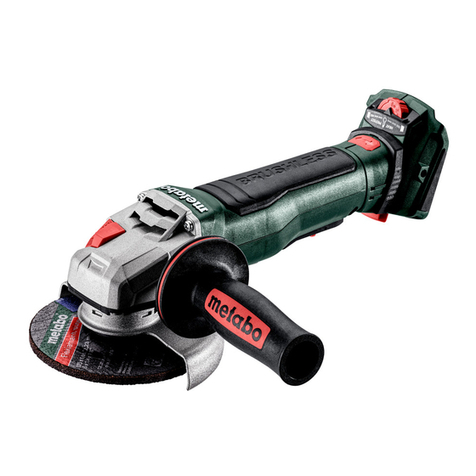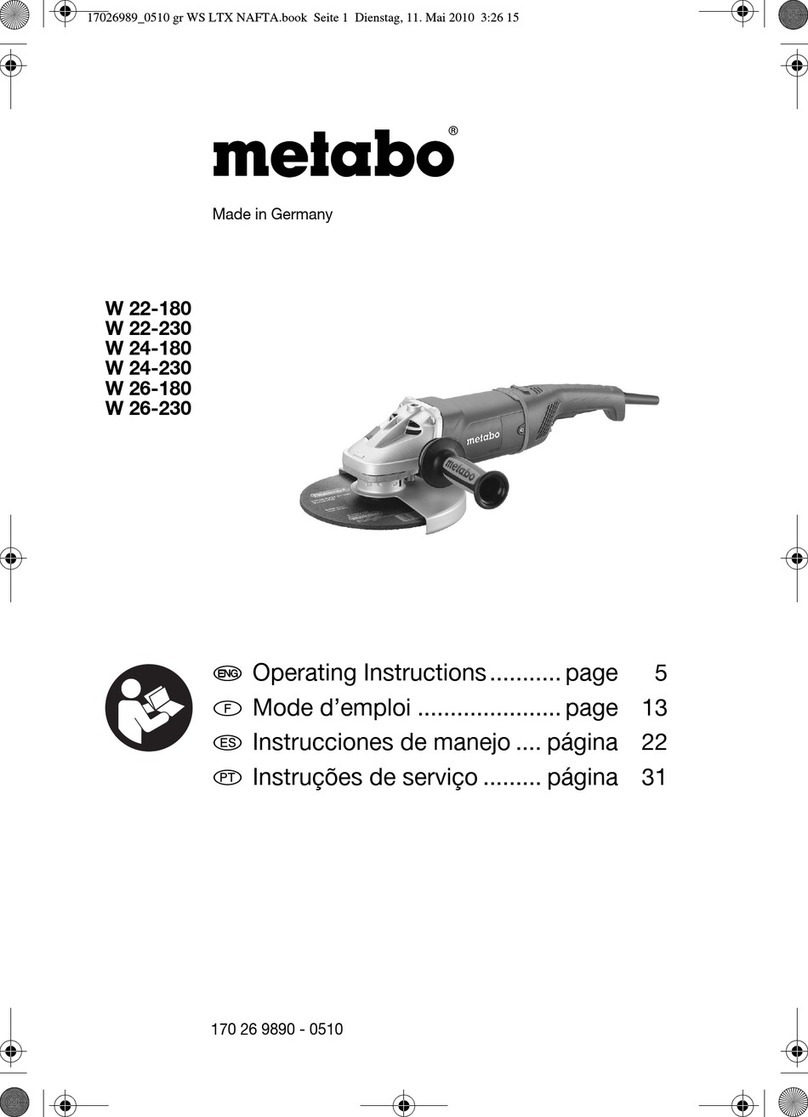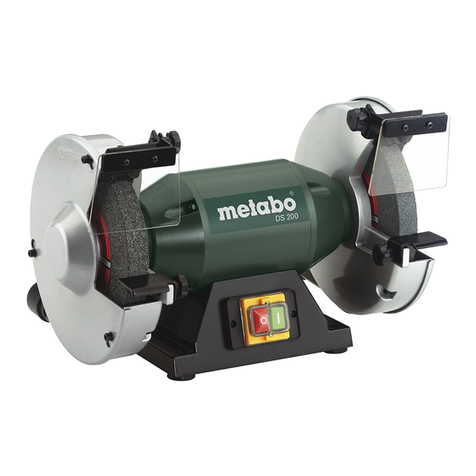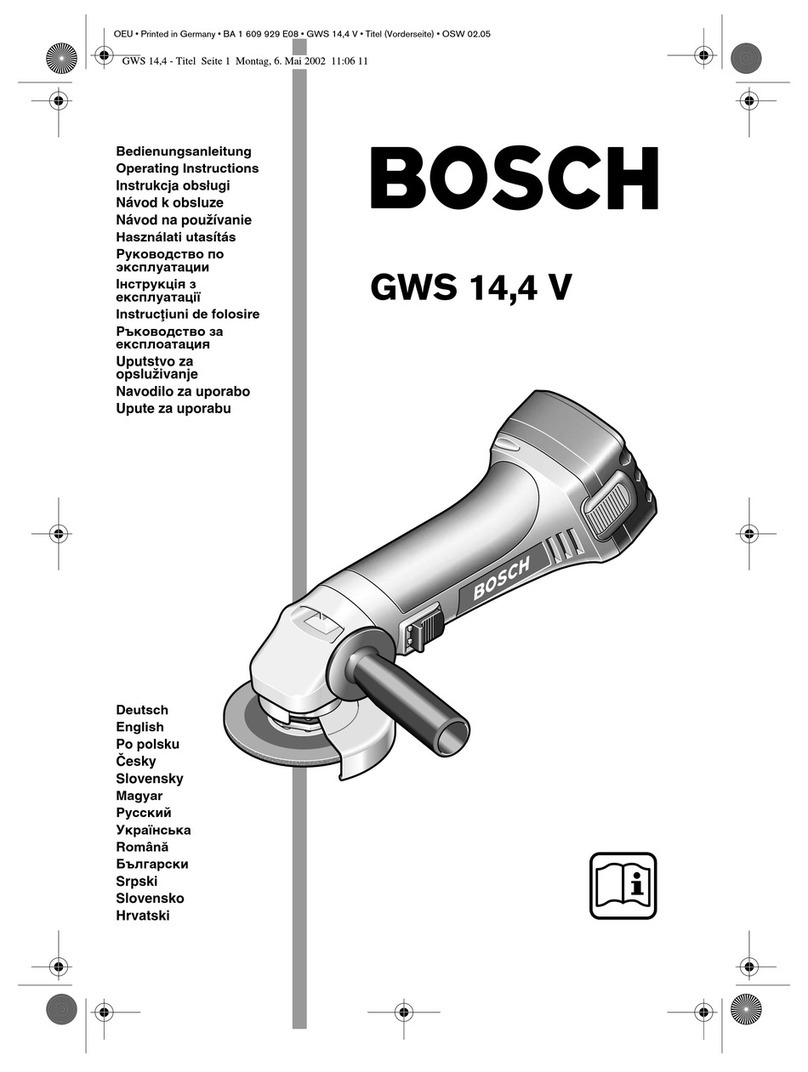
10
en ENGLISH
Original instructions
1. Declaration of Conformity
We, being solely responsible: Hereby declare that
these angle grinders, identied by type and serial
number *1), meet the requirements of all relevant
directives *2) and standards *3). Technical
documents for *4) - see page 3.
2. SpeciedConditionsofUse
The cordless angle grinders, when tted with
original Metabo accessories, are suitable for
grinding, sanding, separating and wire brushing
metal, concrete, stone, tiles, wood, plastics and
similar materials without the use of water.
The user bears sole responsibility for any damage
caused by inappropriate use.
Generally accepted accident prevention
regulations and the enclosed safety information
must be observed.
3. General Safety Information
For your own protection and for the
protection of your power tool, pay
attention to all parts of the text that are
marked with this symbol!
WARNING – Read the operating
instructions to reduce the risk of injury.
WARNINGReadallsafetywarningsand
instructions.Failure to follow all safety
warnings and instructions may result in electric
shock, re and/or serious injury.
Keepallsafetyinstructionsandinformation
for future reference.
Always include these documents when passing on
your power tool.
4. Special Safety Instructions
4.1 GeneralSafetyRecommendationsfor
Grinding,Sanding,WireBrushingor
Cut-OGrinding:
a) Thispowertoolisintendedtofunctionasa
grinder,sander,wirebrushorcut-otool.
Readallsafetywarnings,instructions,
illustrationsandspecicationsprovidedwith
thispowertool. Failure to follow all instructions
listed below may result in electric shock, re and/or
serious injury.
b) Operationssuchaspolishingarenot
recommendedtobeperformedwiththis
power tool. Operations for which the power tool
was not designed may create a hazard and cause
personal injury.
c) Donotuseaccessorieswhicharenot
specicallydesignedandrecommendedby
thetoolmanufacturer. Even if an accessory can
be attached to your power tool, this does not
ensure safe operation.
d) Theratedspeedoftheaccessorymustbe
atleastequaltothemaximumspeedmarked
onthepowertool. Accessories running faster
than their rated speed can break and y apart.
e) Theexternaldiameterandthicknessofyour
accessorymustbewithinthecapacityrating
of your power tool. Incorrectly sized accessories
cannot be adequately guarded or controlled.
f) Thethreadedmountingofaccessoriesmust
matchthegrinderspindlethread.For
accessoriesmountedbyanges,thearbour
holeoftheaccessorymusttthelocating
diameteroftheange. Accessories that do not
match the mounting hardware of the power tool will
run out of balance, vibrate excessively and may
result in a loss of control.
g) Donotusedamagedaccessories.Inspect
accessoriessuchasgrindingdiscsbefore
eachuseforchipsandcracksandinspect
backingpadsforcracks,tearorexcesswear
andwirebrushesforlooseorcrackedwires.If
apowertooloraccessoryisdropped,inspect
fordamageorinstallanundamaged
accessory.Afterinspectingandinstallingthe
accessory,positionyourselfandbystanders
awayfromtheplaneoftherotatingaccessory
andrunthepowertoolatmaximumno-load
speedforoneminute. Damaged accessories will
normally break apart during this test time.
h) Wearpersonalprotectiveequipment.Usea
faceshield,safetygogglesorsafetygoggles
dependingontheapplication.Ifnecessary,
wearadustmask,hearingprotectors,gloves
andaworkshopaproncapableofstopping
smallabrasiveorworkpiecefragments.Eye
protection must be capable of stopping ying debris
generated by various operations. A dust mask or
respirator must be capable of ltering particles
generated by your operation. Prolonged exposure to
high intensity noise may cause hearing loss.
i) Keepbystandersasafedistanceawayfrom
theworkarea.Anyoneenteringtheworkarea
mustwearpersonalprotectiveequipment.
Fragments of a workpiece or broken accessory
may y o and result in injury beyond the
immediate area of operation.
j) Whencarryingouttasksthatinvolvearisk
ofthemountedtoolcontactinghiddenwiring,
makesureyouholdthedeviceonthe
insulatedgrippingsurfacesonly. Cutting
accessory contacting a "live" wire may make
exposed metal parts of the power tool "live" and
could give the operator an electric shock.
k) Positionthecordclearoftherotating
accessory. If you lose control, the cord may be cut
or snagged and your hand or arm may be pulled
into the rotating accessory.
I) Neverlaythepowertooldownuntilthe
accessoryhascometoacompletestop. The
